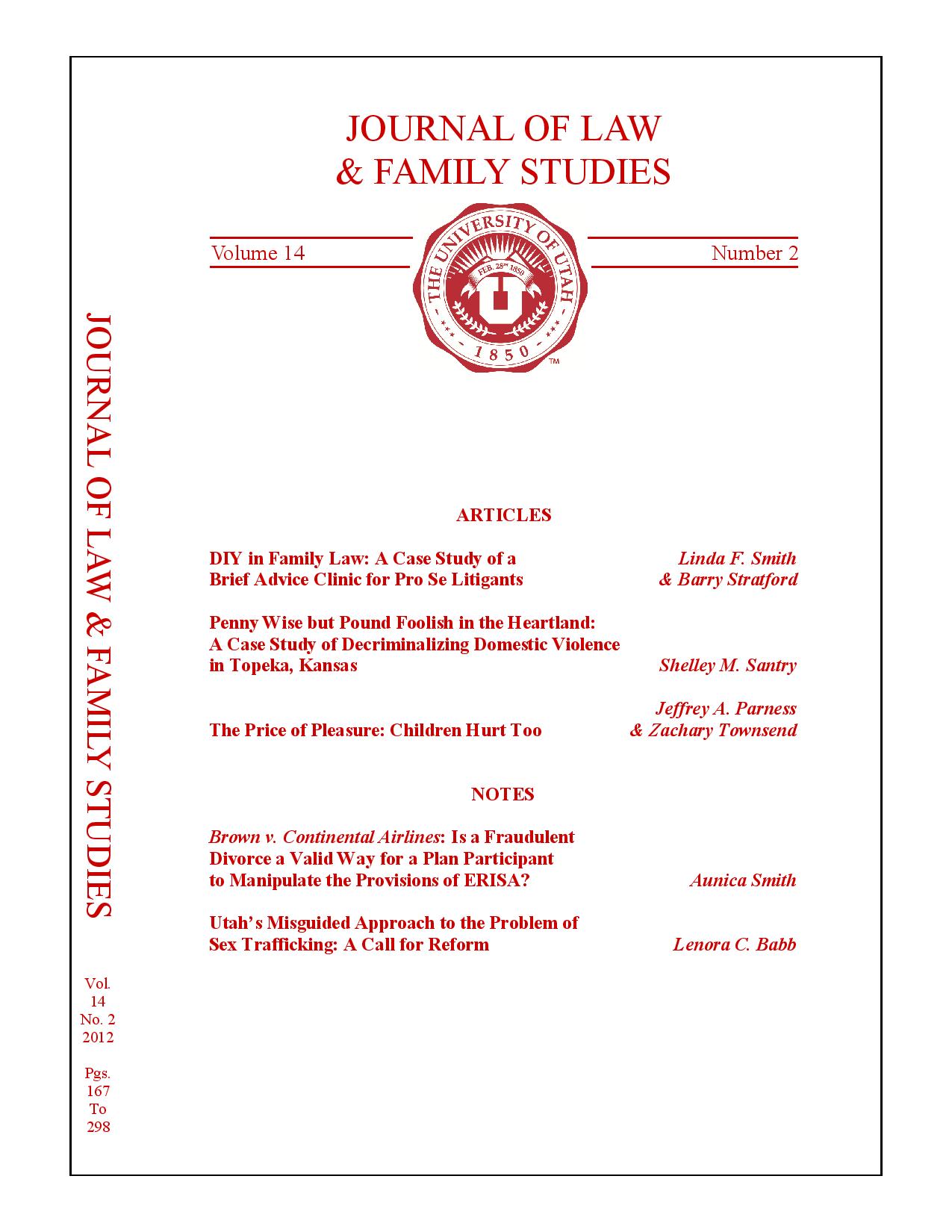BROWN V. CONTINENTAL AIRLINES: IS A FRAUDULENT DIVORCE A VALID WAY FOR A PLAN PARTICIPANT TO MANIPULATE THE PROVISIONS OF ERISA?
Abstract
Would you get a divorce for one million dollars? Nine Continental Airlines pilots and their spouses said yes to this question. Fearing that Continental’s pilot-only defined benefit plan was near financial failure, these pilots filed for divorce. The divorce decrees assigned the pilots’ pension benefits to their former spouses, and Continental, relying on the orders of the state courts, paid the former spouses their elected lump sum distributions. Following the payment of benefits, the formerly-divorced couples remarried. Continental filed suit seeking reimbursement for the benefits paid, alleging these divorces were “sham[s]” undertaken only to receive the pension benefits that the pilots would have not otherwise been eligible to receive because they were still employed by Continental. Based on analogous precedent established by the Supreme Court, the district court dismissed Continental’s claim. The Fifth Circuit affirmed the trial court’s decision and set precedent of its own—a fraudulent divorce may be used to manipulate the provisions of an ERISA-regulated pension plan and a defrauded plan sponsor has essentially no recourse. By failing to provide relief to Continental’s plan, the Fifth Circuit incentivized other plan participants to similarly obtain benefits to which they are not yet entitled via fraudulent domestic relations orders, including sham divorce. The Supreme Court precedent relied upon by the Fifth Circuit established that the Employee Retirement Income Security Act (ERISA) does not authorize a pension plan to “investigate the subjective intentions or good faith underlying a divorce.” Therefore, as long as the domestic relations orders relating to plan disbursements meet the qualification criteria outlined in ERISA, the plan must distribute benefits pursuant to the order. As shown by the result of Brown v. Continental Airlines, even though the purpose and result of the “sham” divorces were to manipulate and “circumvent” Continental’s plan design and ERISA, the Fifth Circuit failed to protect Continental’s pension plan and its participants. When a pension plan is manipulated, relief must be provided to protect the financial integrity of the plan for the sake of all plan participants. ERISA’s purpose, along with the duties of plan fiduciaries, provide ample and sound bases for extending relief to all defrauded pension plans. The purpose of this Note is to discuss the Fifth Circuit’s decision in Brown and to further assert the implications that denying relief could have on all ERISA benefit plans. Part I summarizes ERISA, its domestic relations order qualification requirements, and how these provisions relate to the facts of Brown. Part II discusses the statutory, monetary, and policy-based reasons that should move courts to provide remedies to defrauded plans. Finally, Part III provides two legal theories—the sham transaction doctrine and a restitutionary approach—that may be used to grant equitable relief to defrauded pension plans. Â
How to Cite
.
BROWN V. CONTINENTAL AIRLINES: IS A FRAUDULENT DIVORCE A VALID WAY FOR A PLAN PARTICIPANT TO MANIPULATE THE PROVISIONS OF ERISA?.
Journal of Law and Family Studies, [S.l.], v. 14, n. 2, oct. 2012.
Available at: <https://epubs.utah.edu/index.php/jlfs/article/view/783>. Date accessed: 22 dec. 2025.
Issue
Section
Notes
Copyright Utah Law Review All Rights Reserved.
Authors who publish with this journal agree to the following terms:
- Authors retain copyright and grant the journal right of first publication with the work simultaneously licensed under a Creative Commons Attribution License that allows others to share the work with an acknowledgement of the work's authorship and initial publication in this journal.
- Authors are able to enter into separate, additional contractual arrangements for the non-exclusive distribution of the journal's published version of the work (e.g., post it to an institutional repository or publish it in a book), with an acknowledgement of its initial publication in this journal.
- Authors are permitted and encouraged to post their work online (e.g., in institutional repositories or on their website) prior to and during the submission process, as it can lead to productive exchanges, as well as earlier and greater citation of published work (See The Effect of Open Access).


